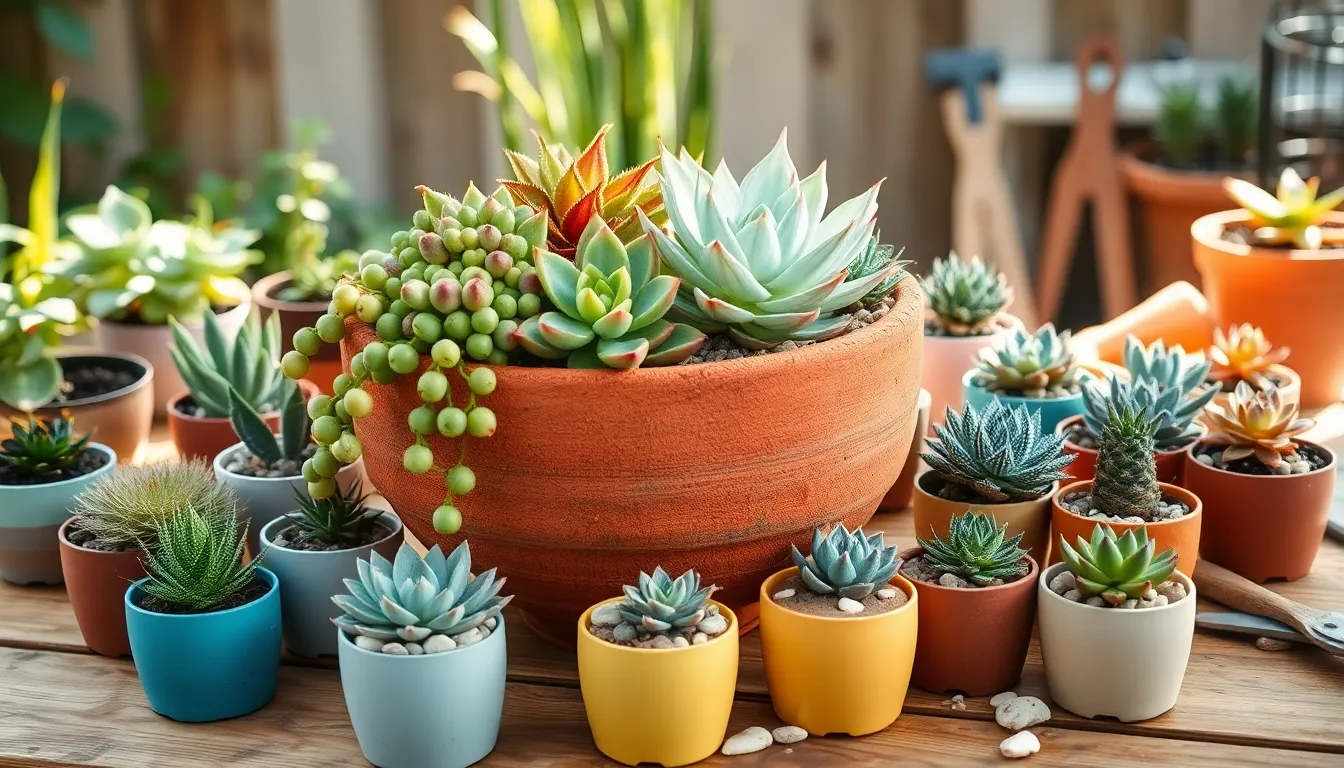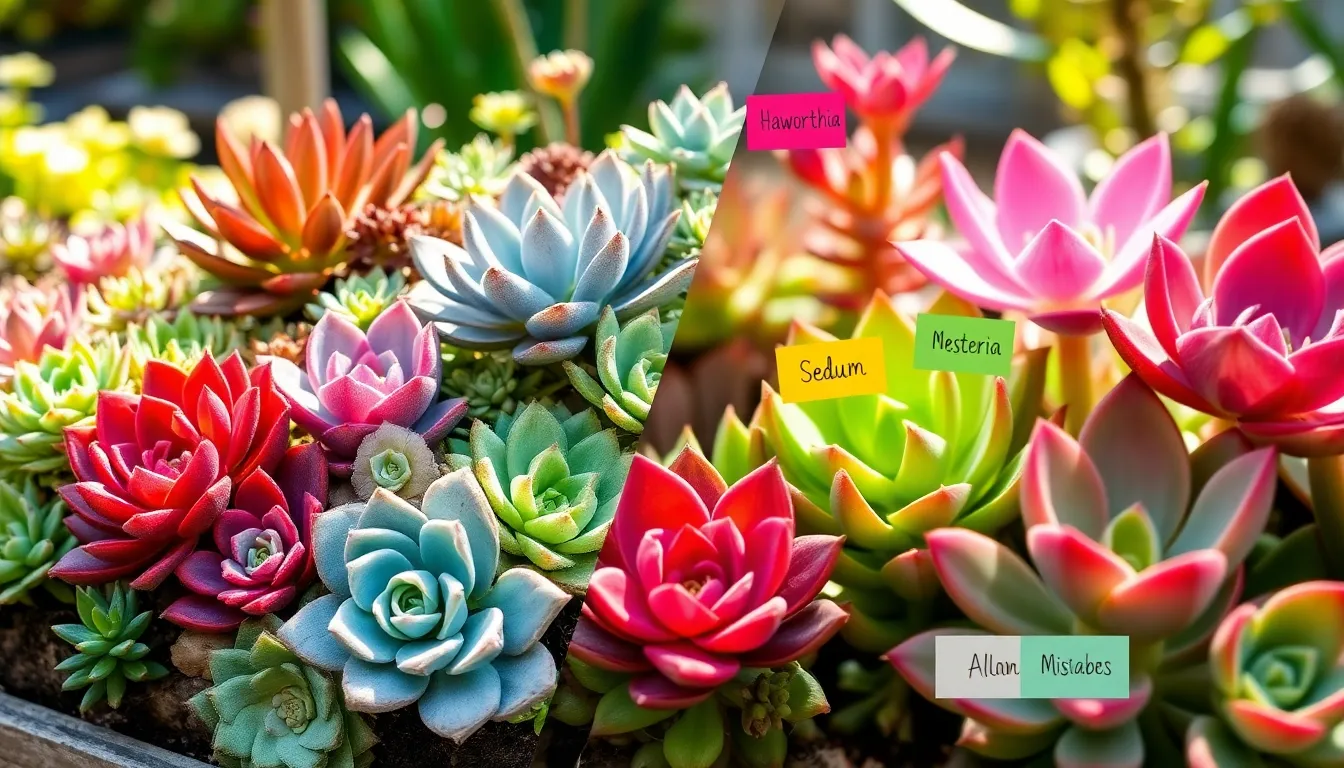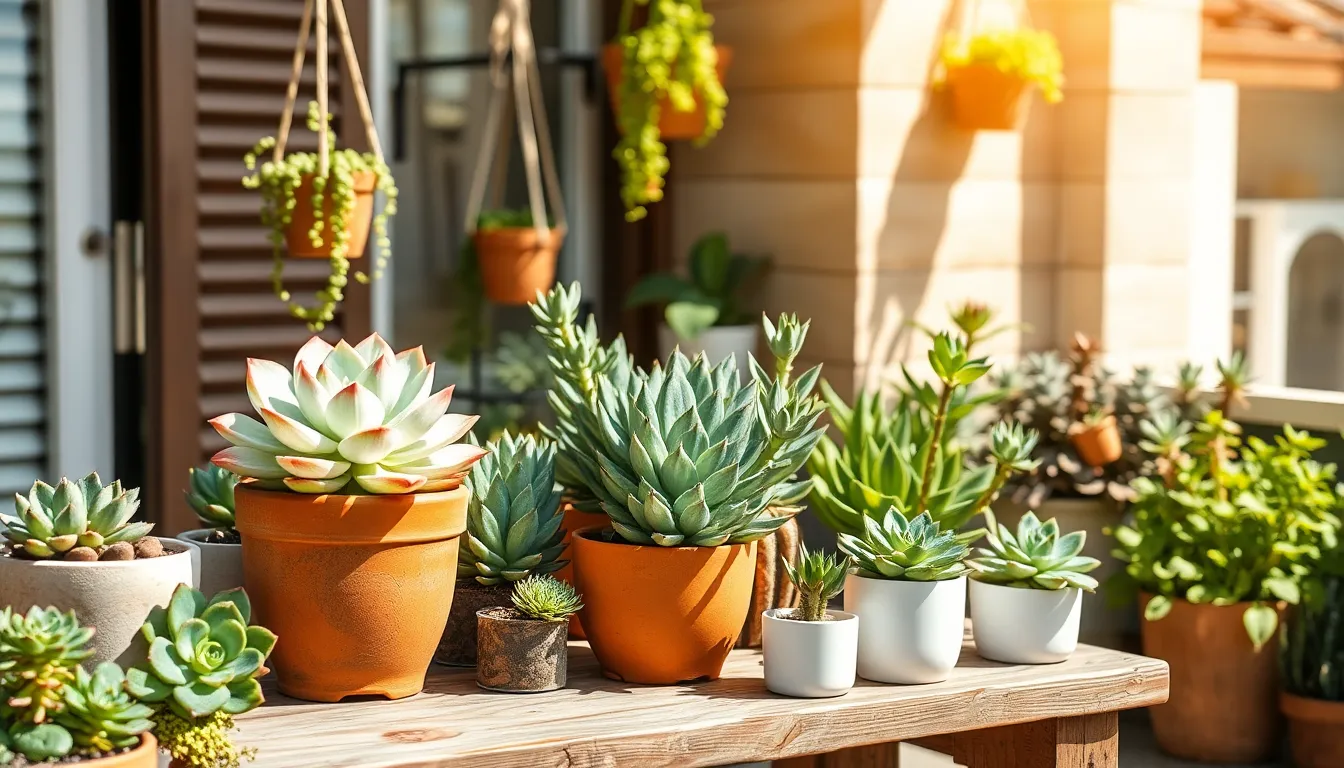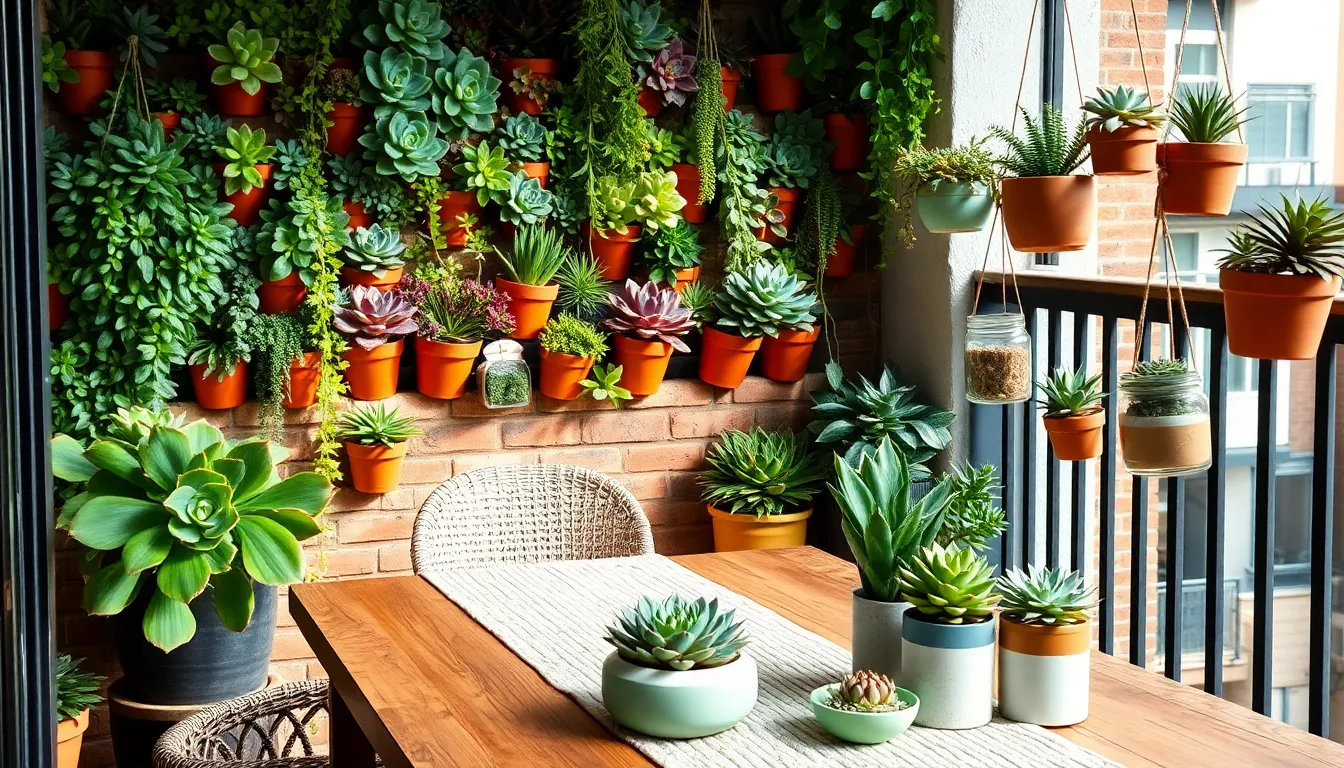Succulents have captured the hearts of gardeners both new and seasoned, with their charming rosettes and undemanding nature. These resilient plants offer a canvas for creativity, providing endless opportunities to experiment with unique and artistic arrangements that can breathe life into any space. Whether you’re just starting your gardening journey or you’re an experienced green thumb looking to try something fresh, creating succulent arrangements can be a fulfilling and therapeutic endeavor.
In this article, we’ll delve into the art of crafting stunning succulent displays that are not only visually appealing but also easy to maintain. You will discover practical tips and inspiring ideas tailored to help you design arrangements that reflect your personal style and flourish in your environment. From selecting the right container to understanding the subtle nuances of color and texture, this guide will equip you with the knowledge to turn your succulent dreams into reality. Join us as we explore the world of succulents, where each arrangement becomes a living masterpiece, inviting tranquility and a touch of nature into your home.
Choosing Beginner-Friendly Succulents
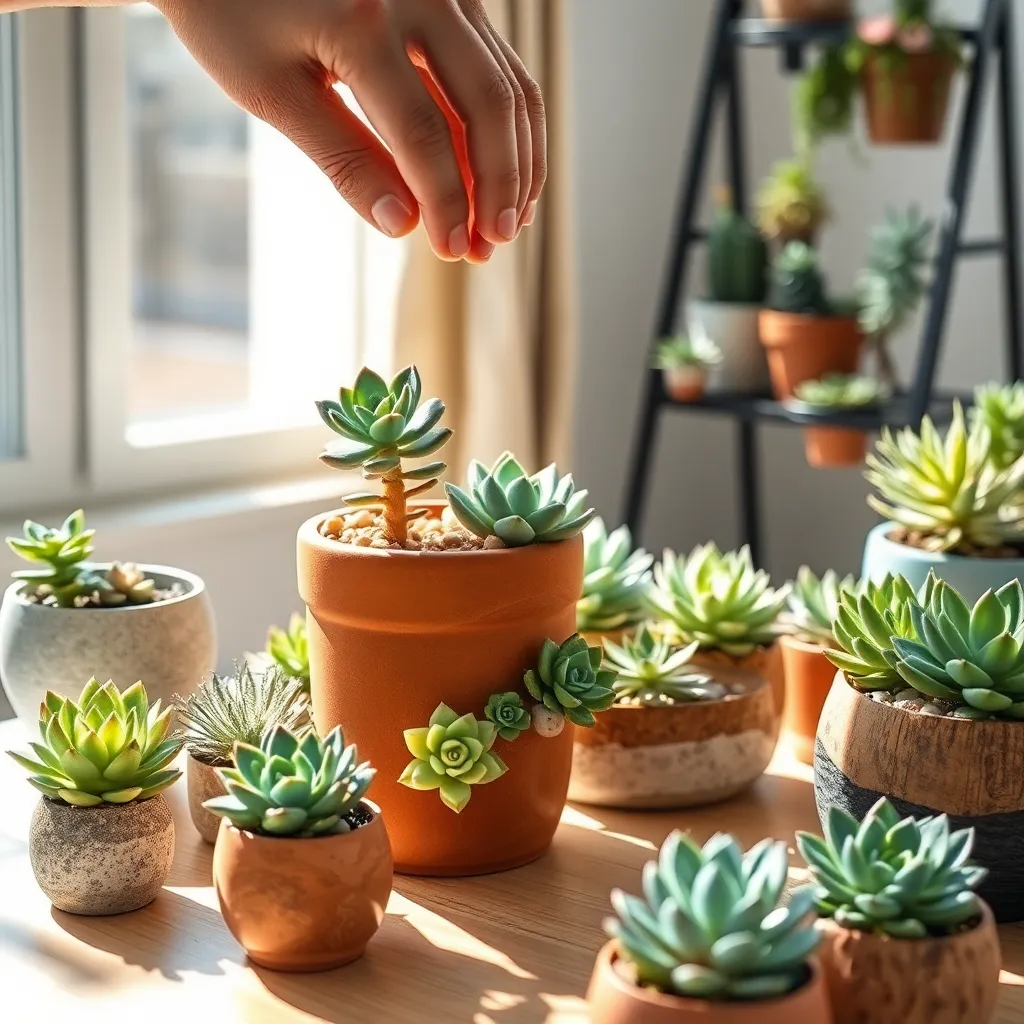
Succulents are a perfect starting point for beginner gardeners due to their low-maintenance nature. One of the most beginner-friendly succulents is the Jade Plant (Crassula ovata), which thrives in bright, indirect sunlight and requires minimal watering.
Another excellent option is the Aloe Vera, known not only for its aesthetic appeal but also for its medicinal properties. Aloe Vera prefers well-draining soil, such as a cactus mix, and should only be watered once the soil is completely dry.
For those who enjoy unique textures, the Zebra Haworthia is an ideal choice with its striking striped appearance. It can tolerate lower light conditions compared to other succulents, making it suitable for indoor gardening.
To ensure success with these succulents, focus on providing the right environment and care. Here are some tips to help you get started:
- Use a pot with drainage holes to prevent water from accumulating at the bottom, which can lead to root rot.
- Water sparingly, typically every 2-3 weeks, and adjust frequency based on the season and humidity levels in your area.
- Place your succulents in a location where they can receive at least 4-6 hours of bright, indirect sunlight daily.
Designing Eye-Catching Arrangements
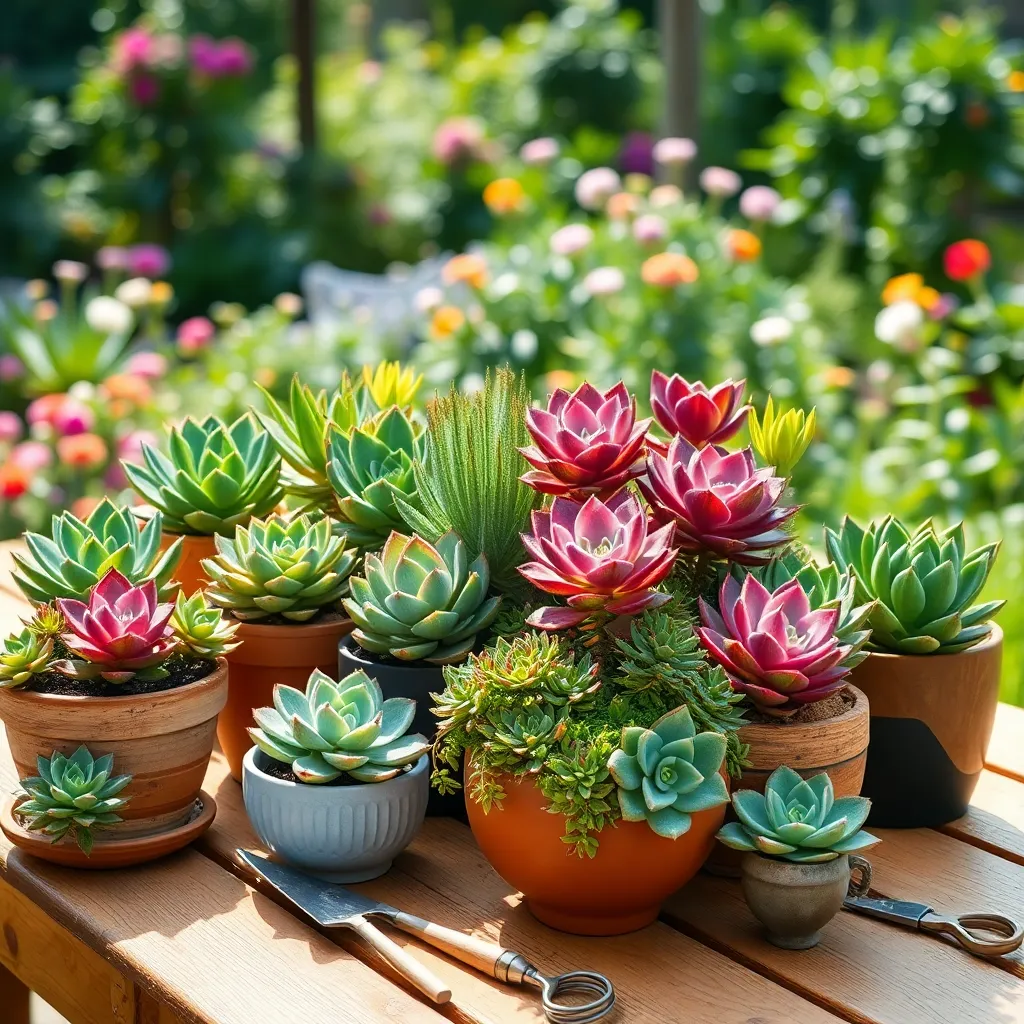
Creating an eye-catching succulent arrangement starts with selecting a variety of shapes and colors. Aim to include a mix of tall, spiky plants like Sansevieria and rosette-forming varieties such as Echeveria to add visual interest.
When arranging succulents, consider the growth habits and light requirements of each plant. Place taller plants in the center or back of the container to create depth, ensuring all plants receive adequate sunlight.
Choose a well-draining potting mix specifically designed for succulents and cacti. This type of soil helps prevent root rot by allowing excess water to escape easily, which is crucial for maintaining healthy plants.
To add texture and contrast, include decorative elements like rocks or pebbles on the soil surface. Not only do these accents enhance the arrangement’s aesthetics, but they also help retain soil moisture and prevent erosion.
Container Selection and Preparation
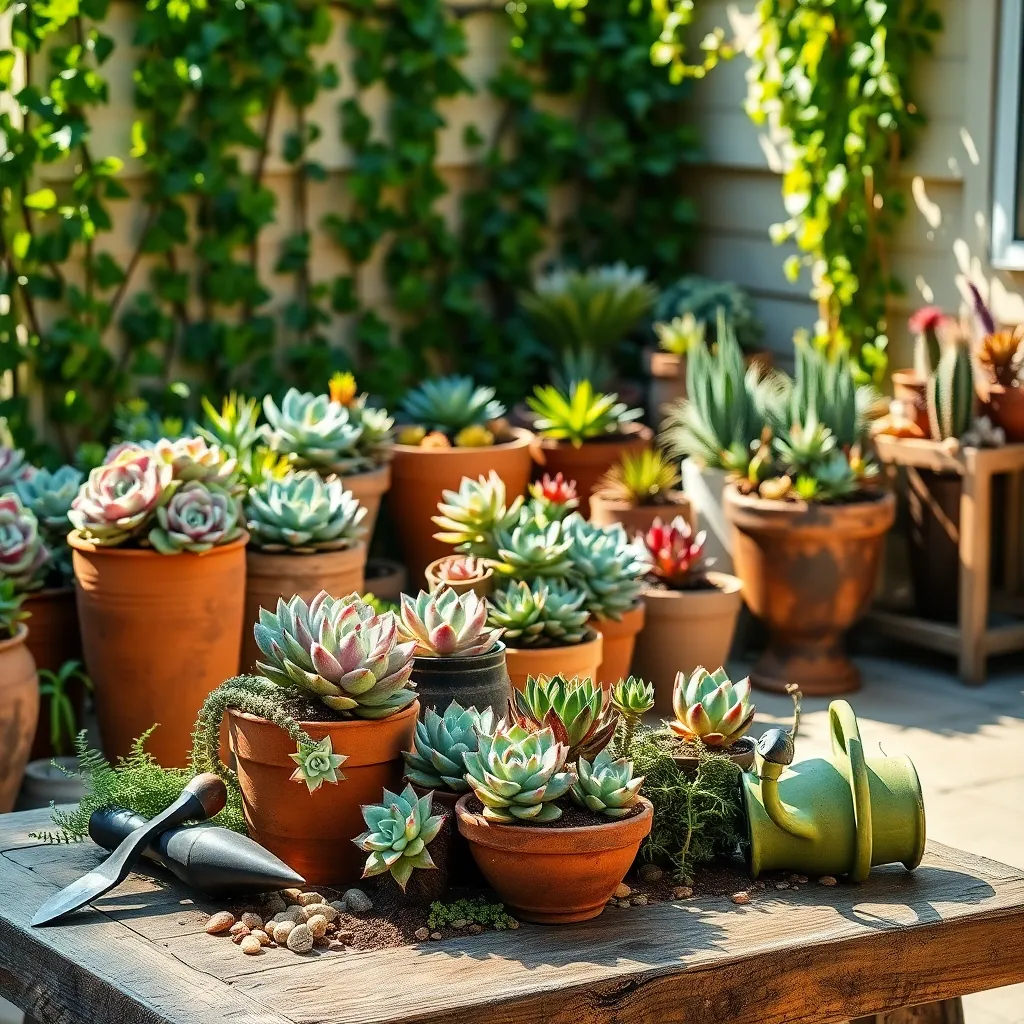
When selecting containers for your succulent arrangements, consider both the aesthetic and the practical aspects. Choose pots with drainage holes to prevent root rot, a common issue with succulents.
Materials matter too; terracotta pots are excellent as they are porous and allow the soil to dry out effectively. For a more decorative touch, ceramic or glass containers can be used, but ensure they have proper drainage or use a layer of pebbles at the bottom.
Size your container appropriately to the succulent variety you choose, allowing enough space for each plant to grow without overcrowding. A general rule is to provide at least one inch of space between the edge of the pot and the plant.
Before planting, prepare your container by filling it with a well-draining soil mix specifically for succulents and cacti. You can create your own mix by combining two parts potting soil, one part sand, and one part perlite for optimal drainage.
Watering your succulent arrangements properly is crucial; let the soil dry out completely between waterings. Overwatering is the most common mistake, so it’s best to err on the side of under-watering.
For advanced gardeners, consider experimenting with hydroponic systems or self-watering pots to maintain consistent moisture levels. These techniques can help manage watering schedules, especially in hot climates or for those with busy lifestyles.
Creative Plant Pairing Ideas
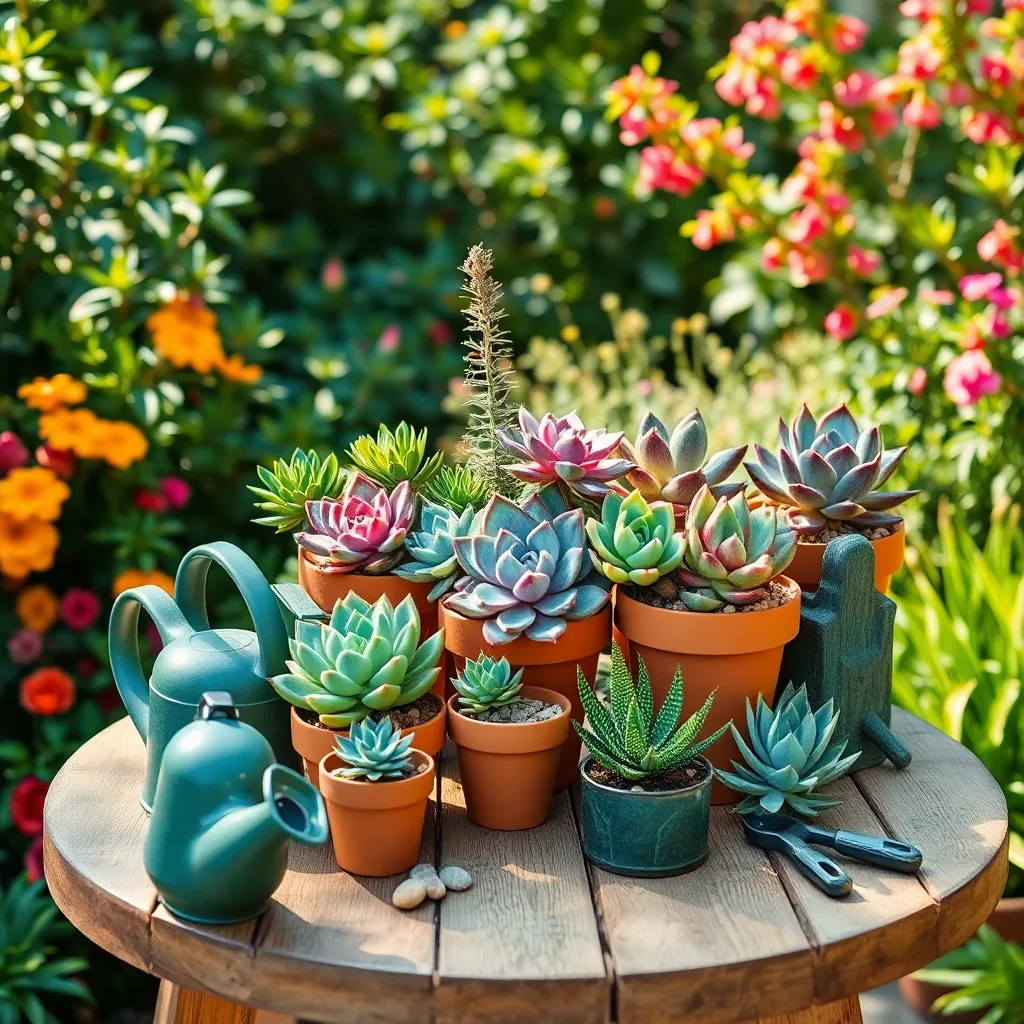
Pairing succulents creatively can transform your container into a living piece of art. Begin by selecting plants with contrasting shapes, like the rosette forms of Echeveria paired with the upright spikes of Aloe.
Consider color as a key element in your arrangements to add visual interest. For instance, the vibrant greens of Sedum can pop against the muted blues of Senecio.
Texture also plays a critical role in creating dynamic arrangements. Combine smooth-leaved varieties like Haworthia with the fuzzy textures of Kalanchoe tomentosa to create a tactile display.
To ensure your succulents thrive together, choose plants with similar light and watering requirements. Most succulents prefer well-draining soil and a sunny location with at least six hours of light daily.
Maintenance Tips for Longevity
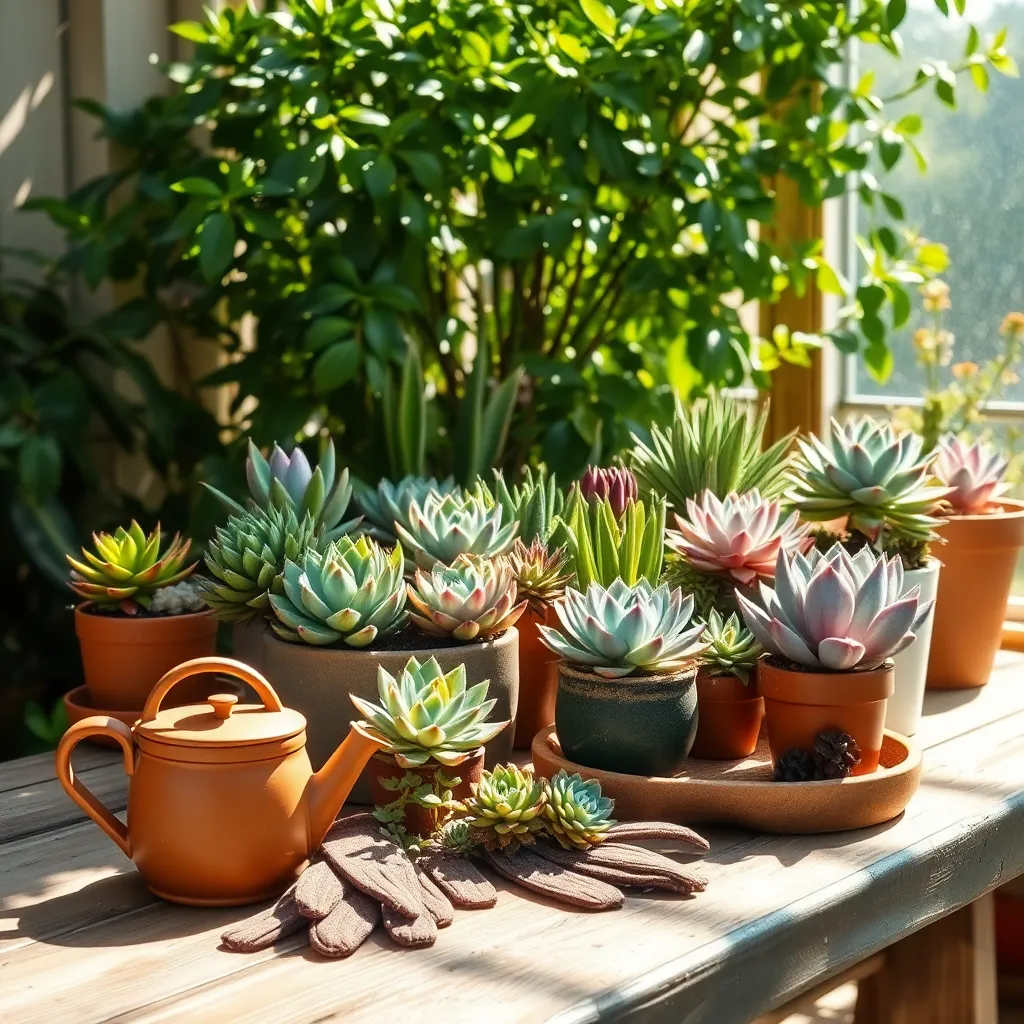
To ensure your succulent arrangements thrive, focus on providing the right soil conditions. Use a well-draining soil mix, ideally one formulated specifically for succulents and cacti, to prevent root rot.
Watering is crucial for succulent longevity, but it must be done judiciously. Allow the soil to dry out completely between waterings to mimic their natural desert environment.
Light is another essential factor in maintaining healthy succulents. Position your arrangements where they can receive plenty of bright, indirect light, such as near a south or east-facing window.
Regular maintenance is key to keeping your succulents looking their best. Remove any dead leaves or debris from the soil surface to improve air circulation and prevent pests.
For those wanting to delve deeper, consider the humidity levels in your home. Succulents prefer low humidity, so avoid placing them in overly humid rooms like bathrooms.
Advanced gardeners might explore the benefits of fertilizing succulents. Use a diluted, balanced fertilizer during the growing season, typically spring and summer, to encourage robust growth.
Conclusion: Growing Success with These Plants
In exploring the art of creative succulent arrangements, we’ve uncovered five key relationship concepts: patience, adaptability, communication, nurturing, and individuality. Just as succulents require patience to thrive, so do our connections with others. Adaptability is essential in both plant care and relationships, allowing us to grow and adjust to new circumstances. Open communication ensures that our needs and expectations are met, while nurturing both plants and relationships fosters growth and resilience. Lastly, embracing individuality celebrates the unique traits that each person or plant brings to the table.
As a tangible next step, take a moment today to nurture one relationship in your life, whether that means reaching out, listening actively, or simply sharing a quiet moment together. This small action can lay the groundwork for a more fulfilling connection.
Remember, relationships flourish with attention and care, much like a well-tended succulent garden. Bookmark this article as a resource to revisit these principles whenever you need a gentle reminder of how to cultivate thriving relationships. Looking forward, with dedication and love, your relationships can grow into something truly beautiful and enduring. Let this be the beginning of a journey toward stronger, healthier connections.

